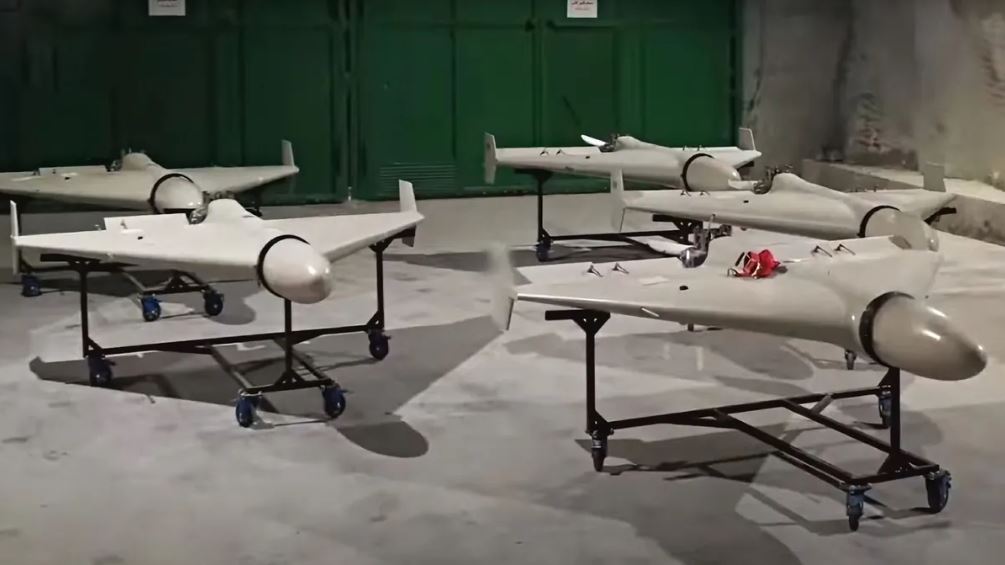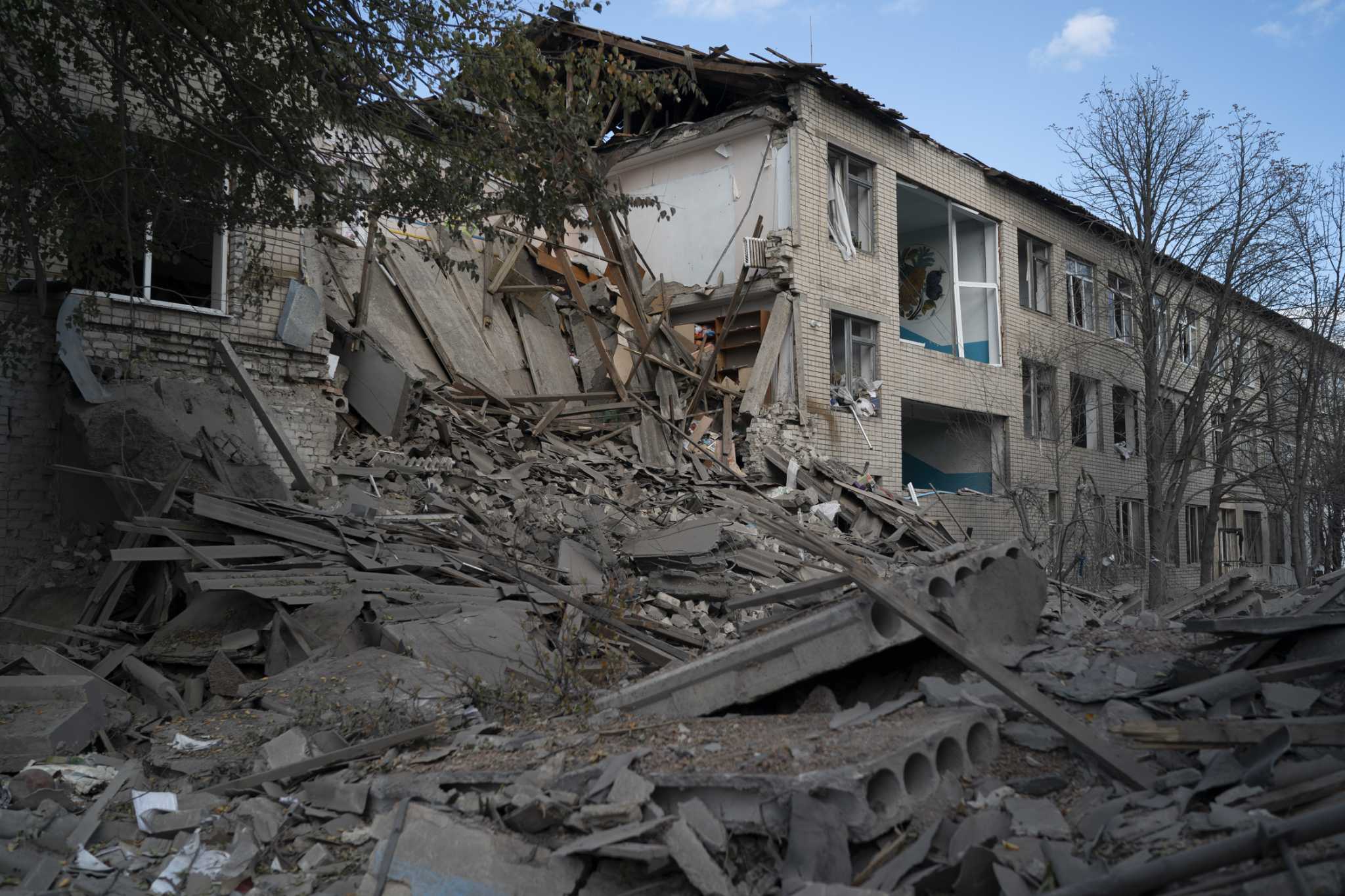Kyiv Is Bombarded By Kremlin "Kamikaze Drones," Prompting Nuclear Concerns
Kyiv is bombarded by Kremlin "kamikaze drones," prompting nuclear concerns. Zaporizhzhia, a city in southern Ukraine, was the target of the most recent Kremlin attacks on Saturday, which included both drones and missiles. Ukrainian officials confirmed that kamikaze suicide drones and missiles attacked the city early in the morning.
Author:Suleman ShahReviewer:Han JuOct 16, 2022106 Shares1.4K Views

Kyiv is bombarded by Kremlin "kamikaze drones," prompting nuclear concerns. Zaporizhzhia, a city in southern Ukraine, was the target of the most recent Kremlin attacks on Saturday, which included both drones and missiles.
Ukrainian officials confirmed that kamikaze suicide drones and missiles attacked the city early in the morning. Zaporizhzhia's interim mayor, Anatoliy Kurtev, also shared on Telegram about what he called an "insidious attack on Zaporizhzhia with kamikaze drones."
Oleksandr Starukh, the head of Zaporizhzhia's regional military administration, claimed that "10 or more" C300 missiles had struck the city on Saturday morning after four "kamikaze" drone raids earlier in the day.
According to Starukh:
“„As a result of the Shahed-136 UAV attack, infrastructure facilities in the city of Zaporizhzhia were destroyed. Fires broke out, which were contained in time by our rescuers. There are no casualties.- Oleksandr Starukh, the head of Zaporizhzhia's regional military administration
While Zaporizhzhia was being bombarded, a Russian rocket apparently struck Kiev, according to the officials. The city of Zaporizhzhia is home to the biggest nuclear facility in Europe, and recent shelling in the area has sparked concern of a nuclear disaster.
Iranian Kamikaze Drones
Suicide drones, or kamikaze drones, are a class of aerial weaponry. Because they can wait a while in an area that has been flagged as a prospective target before striking if an enemy asset is found, they are known as loitering munitions.
The deliberate suicide crash of a Japanese aircraft carrying explosives into an enemy target during World War II is referred to as a "kamikaze." In essence, kamikaze aircraft - either specifically designed or modified regular aircraft - were pilot-guided explosive missiles.
According to U.S. sources who talked to CNN in July, Iranian kamikaze drones from the Shahed series were presented to Russian authorities at Kashan Airfield, south of Tehran.
Iranian suicide drones have been used by Russia in Ukraine since September. These drones have a payload capacity of roughly 50 kg and can transport precision-guided missiles weighing 110 pounds.
Allies Guarantee Ukraine An Air Defense System
Ukraine has lobbied with its partners for air defense systems ever since the crisis broke out in February, but the need has become more pressing ever since Russia began using drones built in Iran.
Air defense systems were one of the top three things on a Ukrainian wish list of arms, according to a handout provided to the military ministers in attendance at the Ukraine Defense Contact Group meeting on Wednesday in Brussels.
Since Monday, when Russia initially began its bombing campaign against Ukraine, Germany has dispatched the first of four IRIS-T SLM air defense systems to Kyiv. The IRIS-T system is made in Überlingen by Diehl Defense and costs about €140 million ($136 million) per unit. They're designed to provide troops and small communities with medium-range, high-altitude cover.
The missiles are positioned all around the launcher and use infrared imaging to detect targets. The weapon has never been used on a battlefield; the last tests on it were finally completed in late 2021.
John Kirby, a spokesperson for the White House National Security Council, said on Tuesday that Washington has committed to accelerating the delivery of the National Advanced Surface-to-Air Missile Systems (NASAMS); two units are expected to be sent shortly, and six more over a longer period of time.
NASAMS, a Norwegian company called Kongsberg Defence & Aerospace and an American company called Raytheon, is one of NATO's most regularly used air-defense systems.
One of the most widely utilized air-to-air weapons for fighter jets worldwide, the Advanced Medium-Range Air-to-Air Missile (AMRAAM), which might be used with the NASAMS launcher provided by the United States, has also been committed to by the United Kingdom.
Also, promising Ukraine military equipment to counter Russian missiles, which don't seem to be slowing down, are France, the Netherlands, and Canada.

Suleman Shah
Author
Suleman Shah is a researcher and freelance writer. As a researcher, he has worked with MNS University of Agriculture, Multan (Pakistan) and Texas A & M University (USA). He regularly writes science articles and blogs for science news website immersse.com and open access publishers OA Publishing London and Scientific Times. He loves to keep himself updated on scientific developments and convert these developments into everyday language to update the readers about the developments in the scientific era. His primary research focus is Plant sciences, and he contributed to this field by publishing his research in scientific journals and presenting his work at many Conferences.
Shah graduated from the University of Agriculture Faisalabad (Pakistan) and started his professional carrier with Jaffer Agro Services and later with the Agriculture Department of the Government of Pakistan. His research interest compelled and attracted him to proceed with his carrier in Plant sciences research. So, he started his Ph.D. in Soil Science at MNS University of Agriculture Multan (Pakistan). Later, he started working as a visiting scholar with Texas A&M University (USA).
Shah’s experience with big Open Excess publishers like Springers, Frontiers, MDPI, etc., testified to his belief in Open Access as a barrier-removing mechanism between researchers and the readers of their research. Shah believes that Open Access is revolutionizing the publication process and benefitting research in all fields.

Han Ju
Reviewer
Hello! I'm Han Ju, the heart behind World Wide Journals. My life is a unique tapestry woven from the threads of news, spirituality, and science, enriched by melodies from my guitar. Raised amidst tales of the ancient and the arcane, I developed a keen eye for the stories that truly matter. Through my work, I seek to bridge the seen with the unseen, marrying the rigor of science with the depth of spirituality.
Each article at World Wide Journals is a piece of this ongoing quest, blending analysis with personal reflection. Whether exploring quantum frontiers or strumming chords under the stars, my aim is to inspire and provoke thought, inviting you into a world where every discovery is a note in the grand symphony of existence.
Welcome aboard this journey of insight and exploration, where curiosity leads and music guides.
Latest Articles
Popular Articles
